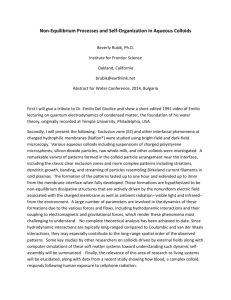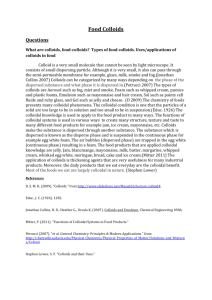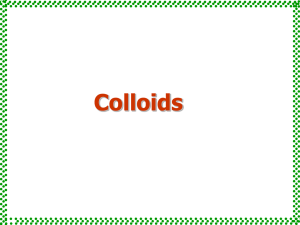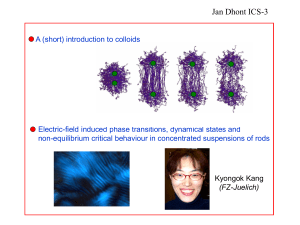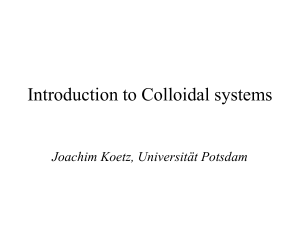Colloids - Bridgman Public Schools
advertisement
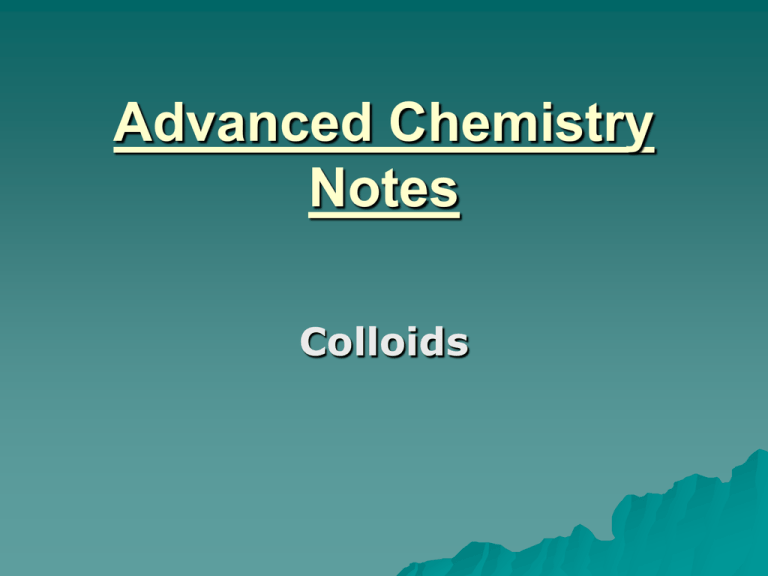
Advanced Chemistry Notes Colloids Colloids and Solutions Recall: solutions were homogenous mixtures Suspensions are a heterogeneous mixture in which the particles eventually settle out. – Ex: muddy water Colloids are intermediates of solutions and suspensions. Colloids Colloids are defined as mixtures composed of two or more phases of matter. Dispersed phase (colloid particles) - larger than the single particles of a solution but smaller than the particles of a suspension. Continuous Phase – the dispersing medium Colloids Colloids and Solutions Comparison of Solutions, Suspensions and Colloids Type Particle Size Permanence Solution < 1 nm > 1 nm but < 100 nm Suspension > 100 nm Colloid Permanent Permanent Settles out Classification of Colloids Colloids are based on the states of the dispersed and continuous phases Aerosols – liquids and solids dispersed in gases – Ex: Smoke Foams – gases dispersed in a liquid or a solid – Marshmallows; whipped cream Classification of Colloids Colloids are based on the states of the dispersed and continuous phases Emulsions – liquids are dispersed in other liquids or in solids – Ex: Mayo, cheese, Sols – dispersion of solids in liquids or other solids – Ex: paint, jelly, pearls Properties of Colloids Special properties of Colloids Tyndall effect – the scattering of light by a colloid Properties of Colloids Special properties of Colloids Brownian Motion – continuous random motion of colloid particles. Properties of Solutions, Colloids and Suspensions Solution Colloids Suspensions Don’t settle Don’t settle Settles Doesn’t scatter light Unaffected by membranes Scatters light Scatters light Separated by membrane Separated by membrane Pass through filter Pass through filter Separated by filter paper paper paper unchanged unchanged Summary Be able to… Define Colloid and Suspension Explain how Colloids relate to Solutions and Suspensions in terms of particle size and permanence Classify Colloids Describe properties of Colloids
